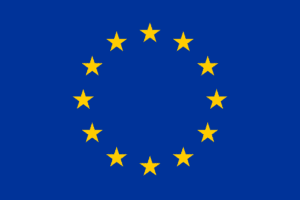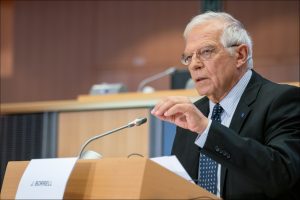
Vodafone Ukraine (PrJSC VF Ukraine) in 2019 saw a 45% rise in net profit compared with 2018, to UAH 2.54 billion, explaining the figure by growth in expenses on active development of 4G and 3G networks.
Vodafone Ukraine CEO Olha Ustinova said that the company’s income last year grew by 25%, to UAH 15.98 billion and Operating Income Before Depreciation and Amortization (OIBDA) rose by 21% year-over-year, reaching UAH 8.3 billion.
Vodafone Ukraine CFO Natalia Shevchenko said that in 2019, the operator doubled the number of 4G towers to 7,200. On average, the Vodafone data client uses almost 5 GB of traffic per month.
In general, the company’s investment in infrastructure development since the start of construction of high-speed mobile Internet networks amounted to UAH 25.4 billion.
According to information released during the presentation, as of December 31, 2019, the Vodafone chain in Ukraine included 629 mono-brand stores, of which 249 are own and 380 are dealerships. Sales revenue in 2019 amounted to $17.7 million, which is 4.6 times more than in 2018.
In 2019, the number of Vodafone customers in the country amounted to 19.7 million. The operator’s 4G network covers 69% of the country’s territory, which is 1.5 times more than the previous indicator for 2018.
According to the results of 2018, Vodafone Ukraine, the second largest mobile operator in Ukraine, reduced its net profit by 18.1% compared to 2017, to UAH 1.777 billion with an 8% increase in revenue, to UAH 12.8 billion. The company explains this figure as an increase in expenses due to the active deployment of 4G and 3G networks.

Private joint-stock company United Mining-Chemical Company, which the State Property Fund (SPF) of Ukraine jointly with the advisor BDO is preparing for privatization, is of the biggest interest among potential buyers, Head of the SPF Dmytro Sennychenko has said. “United Mining-Chemical Company is still the flagship of large-scale privatization: according to the advisor BDO, which is completing the preparation of marketing materials, 16-18 companies have already announced their intentions to take part in the competition,” he said in an interview with Interfax-Ukraine.
“Among them are two Ukrainian holdings, and the rest are well-known international companies: Japanese, Australian and others that will compete, having received information about the company, about reserves, about deposits,” Sennychenko said.
He explained this significant interest in the competition by the fact that titanium production has a value chain from final consumers to semi-finished products and titanium sponge manufacturers and ore mining companies.
“We will look at the profiles of these customers together with the relevant services and analyze them from the point of view of strategic security… We will carefully look at what holdings are there, what is the ownership structure,” the head of the SPF said. He called the publication about the alleged preparation of this facility for sale to buyers from Russia stove-piping.
Sennychenko recalled that the advisor and international professional companies, together with the SPF and the competition commission, will prepare draft conditions for potential buyers. However, the Cabinet of Ministers will finally approve these conditions.

The European Commission has announced its decision to provide EUR 1.2 billion of assistance to Ukraine during the coronavirus disease (COVID-19) pandemic, Ukrainian President Volodymyr Zelensky has said.
“This is an unprecedented amount of macro-financial assistance. The EU’s decision is not only a manifestation of solidarity in difficult times. This is evidence that Ukraine was not mistaken in making the European choice. Indeed, a friend in need is a friend in deed,” the head of state’s press service said, quoting Zelensky as saying on Wednesday.
The financing from the EU will help guarantee the macroeconomic stability of Ukraine.
“Thanks to such support, the state will be able to provide extra money to protect citizens and mitigate the negative consequences of the pandemic for people,” the press service said.

The Ukrainian insurance market this year could cut the volume of insurance premiums collected by 20-30% compared with 2019 due to the coronavirus disease (COVID-19) pandemic and the economic situation, according to insurers polled by Interfax-Ukraine.
“We have made three scenarios: from optimistic to pessimistic. All three scenarios provide for deviation from planned sales plans. Under an optimistic scenario, we (and possibly the entire market) will reach last year’s sales figures (around 5%); the average scenario provides for a 15% drop compared to last year; the pessimistic scenario can mean a drop of 30% or higher for the market compared to last year. We are optimistic,” Deputy Board Chairman of ARX (formerly AXA Insurance) Viacheslav Havrylenko said.
The forecast for a decrease in market volumes by 20-30% was made in the insurance companies Guardian and Euroins Ukraine. At the same time, according to Euroins Ukraine, the crisis will continue in 2021.
At the same time, the TAS Insurance Group said that the insurance market after lockdown should recover in a couple of months. Two factors can prevent this: a sharp jump in the hryvnia exchange rate to the U.S. dollar or significant problems with the income of the population due to the long lockdown and the fact that many were forced to go on vacation at their own expense.
“If there are no serious shocks, we see no reason not to cope with the tasks that we have set for ourselves this year. We, as a company focused on retail sales, are not so dependent on the corporate sector, which will suffer the most in the crisis Therefore, at the moment I don’t see the need to make any considerable adjustments to our plans, but time will tell,”, Board Chairman of TAS insurance group Pavlo Tsaruk said.
According to UNIQA insurance company, it all depends on the duration of the lockdown and changes in its regime. With the weakening of quarantine from the end of April and the gradual exit from it during May, the impact will be, but a significant drop will probably be avoided. Most stable and capitalized insurers must cope with these challenges. Therefore, now customers should pay close attention to the reliability, stability and financial viability of the insurer, the company said.
Asked what companies intend to do in order to minimize possible losses in the business, most insurers said that they intend to optimize processes and costs that are not necessary now, to work on diversifying the portfolio, and not to stop providing a high level of service for all types insurance, continue digitalizing business processes, enhancing responsibility and discipline.
“Crises are not only problems, but also always opportunities. We have long wanted to abandon paper policies and are actively introducing electronic policies wherever possible. Also, quarantine made it easier for us to introduce digital channels of interaction with customers who did not want before remote work, now they actively and with pleasure use our services to purchase policies and settle losses, including self-purchase of policies online on our website,” Havrylenko said.
According to Board Chairman of Alfa Insurance Iryna Hevel, “the crisis will force insurers to diversify the portfolio, because no matter what, one need to adapt to new realities, re-profile sellers, restructure work with partners and customers. But also, these new realities will definitely speed up and launch the digitalization of processes in companies. We’ll see how the situation develops, but we would like the economy and each particular business to recover as quickly as possible,” she said.
Most of the market players surveyed consider the worst economic situation in Ukraine and the risk of its deterioration, the state of uncertainty, the lack of stability and understanding of how long it will last, the emotional state of the team and customers to be the most difficult.

Ukraine in January-March 2020 exported agricultural products for $5.7 billion, which is 6% more than a year ago, the Ukrainian Agribusiness Club (UCAB) has reported.
According to a report on the association’s website, the crisis minimally affected the trade in agricultural products in the first quarter of 2020. According to the results of the first three months of the year, exports grew by categories: fats and oils by $235.1 million (a rise of 19%), finished products by $74.8 million (a rise of 9%), crop products by $49.3 million (a rise of 2%). In particular, exports of sunflower oil grew by $193.1 million (17%), corn by $148.6 million (8%) and barley by $58.7 million (132%). At the same time, there was a reduction in the supply of rapeseed from Ukraine by $69.1 million (97%), soybeans by $50.4 million (19%) and wheat by $25.2 million (4%).
The association said that the export of livestock products decreased 15% and in January-March 2020 it amounted to $265.9 million. The decrease was due to a fall in supplies of eggs from Ukraine by $13.1 million (36%) and poultry by $10 5 million (7%).
“This situation is caused by a partial ban on the export of these products as a result of an outbreak of avian influenza in Ukraine,” the UCAB said.
At the same time, according to the association, imports of agricultural products in January-March 2020 amounted to $1.7 billion, which is 18% more than the same period last year. The supply of cheese rose by $26.3 million (almost twice), potatoes by $19.8 million (12 times) and citrus by $16.4 million (a rise of 21%).

The European Union’s position to support the sovereignty and territorial integrity of Ukraine is unchanged, High Representative/Vice-President Josep Borrell said. High Representative/Vice-President Josep Borrell gave such assurances to Minister of Foreign Affairs of Ukraine Dmytro Kuleba during a telephone conversation on Tuesday, April 21 before the meeting with EU Foreign Affairs Ministers, which will also consider the Ukrainian issue. This was announced by the EU press service on Wednesday.
“High Representative Borrell underlined the EU’s steadfast support to Ukraine’s sovereignty and territorial integrity. He welcomed Ukraine’s continued reform efforts, highlighting in particular the importance of the banking law in this regard,” the message reads.
He also highlighted the EU’s support to Ukraine in response to the coronavirus outbreak. EUR 190 million has been allocated to Ukraine, to support the health sector and social and economic recovery. In that context, they also emphasized the importance to counter disinformation surrounding the pandemic.
“They discussed the recent release and exchange of detainees related to the conflict in eastern Ukraine that took place on 16 April, and the need to continue work to implement the Minsk agreements,” the press release reads.
High Representative Borrell looked forward to visiting Ukraine as a priority once the conditions allow.